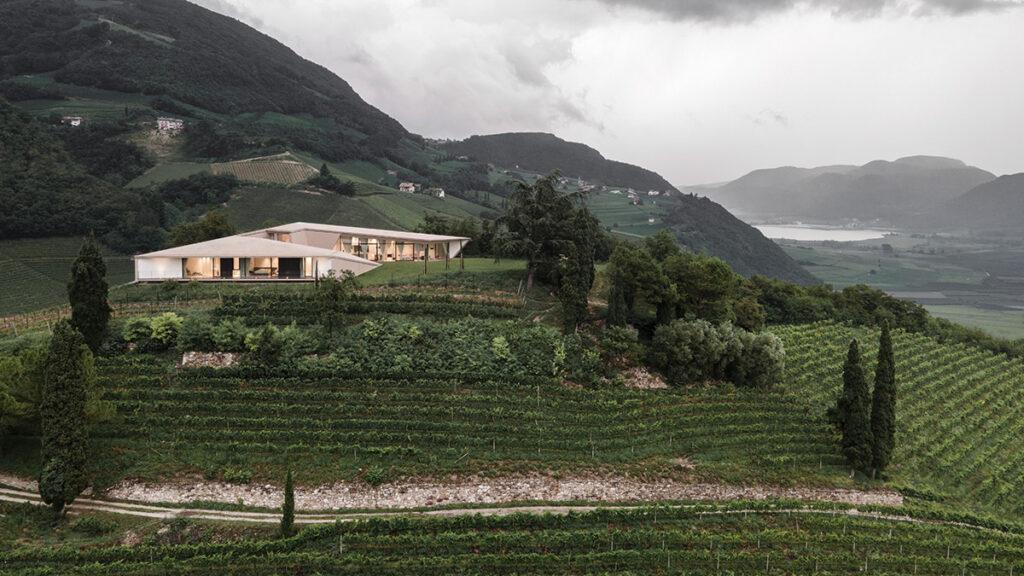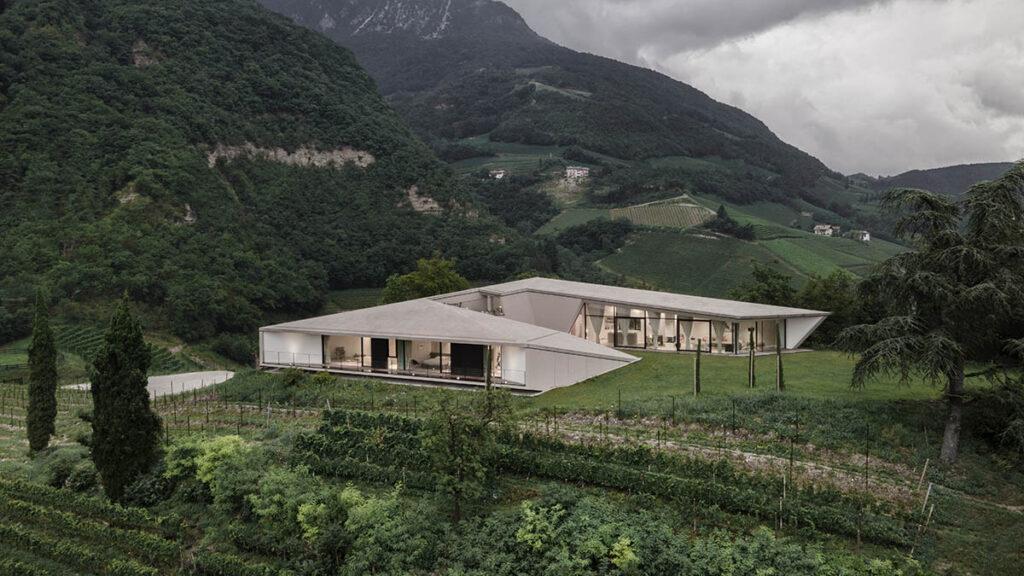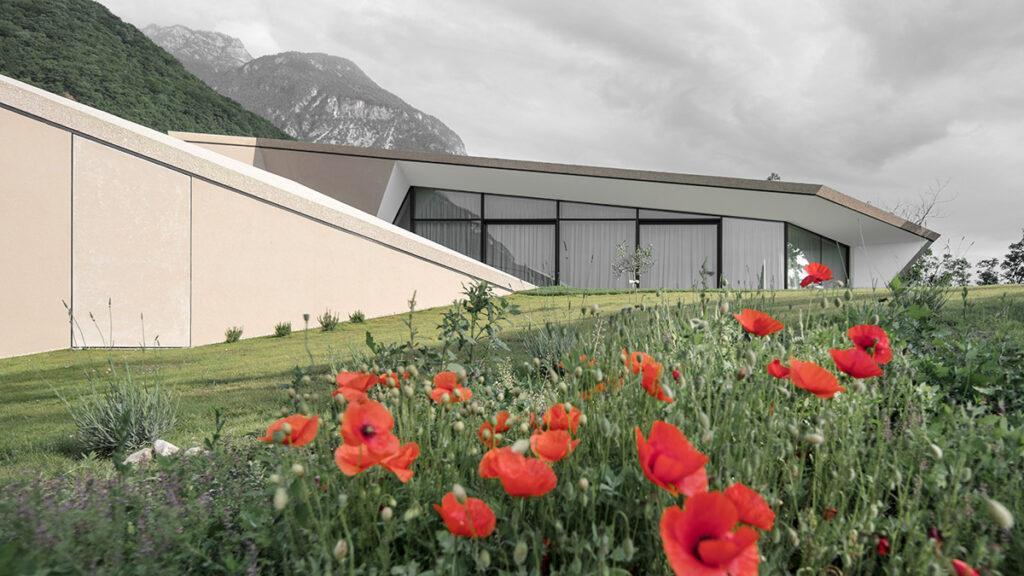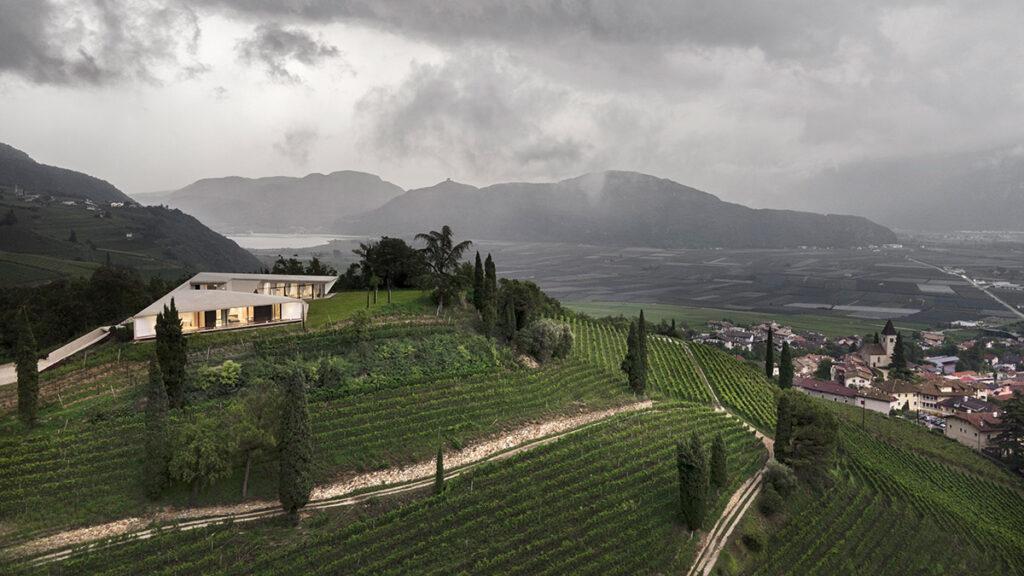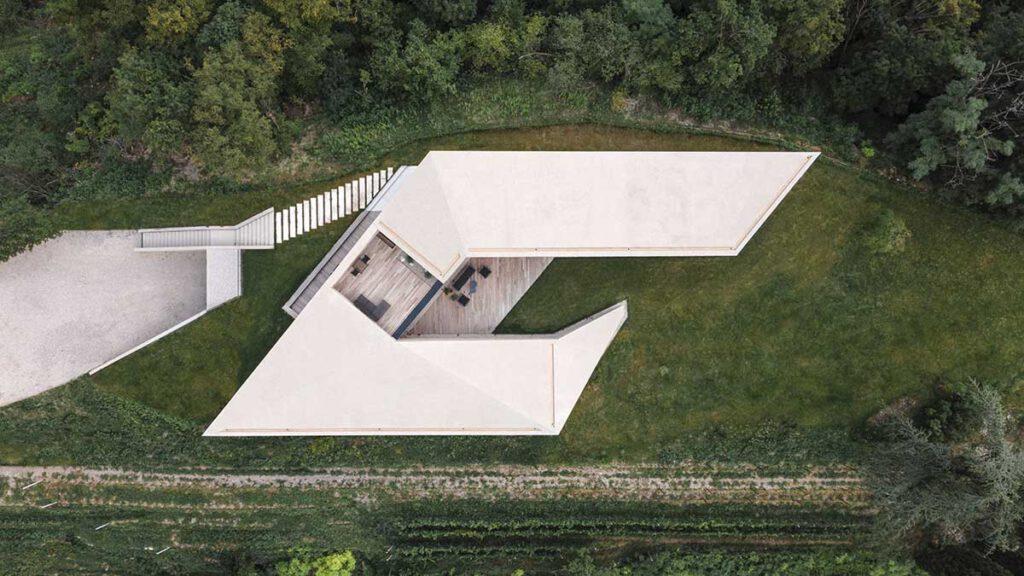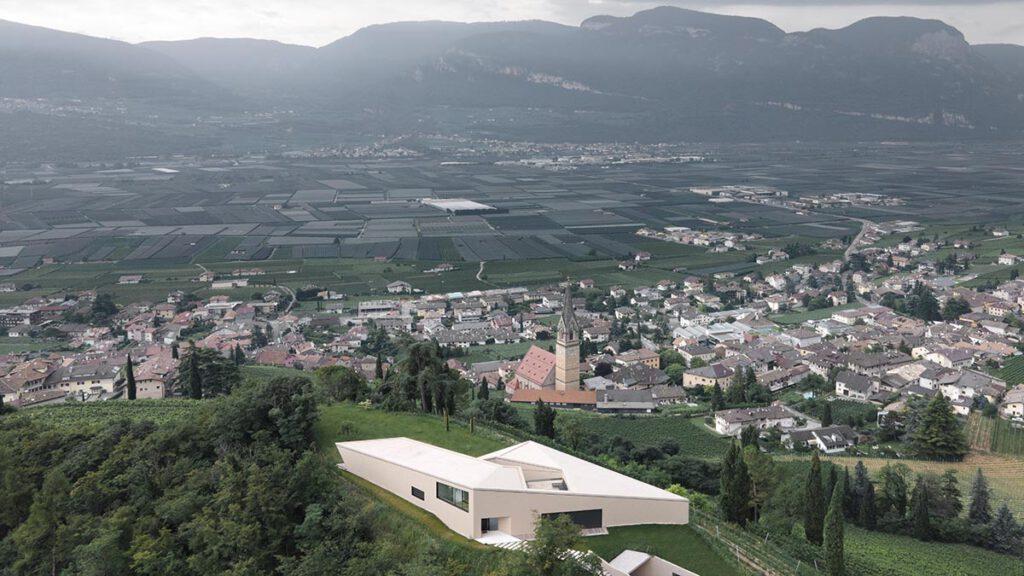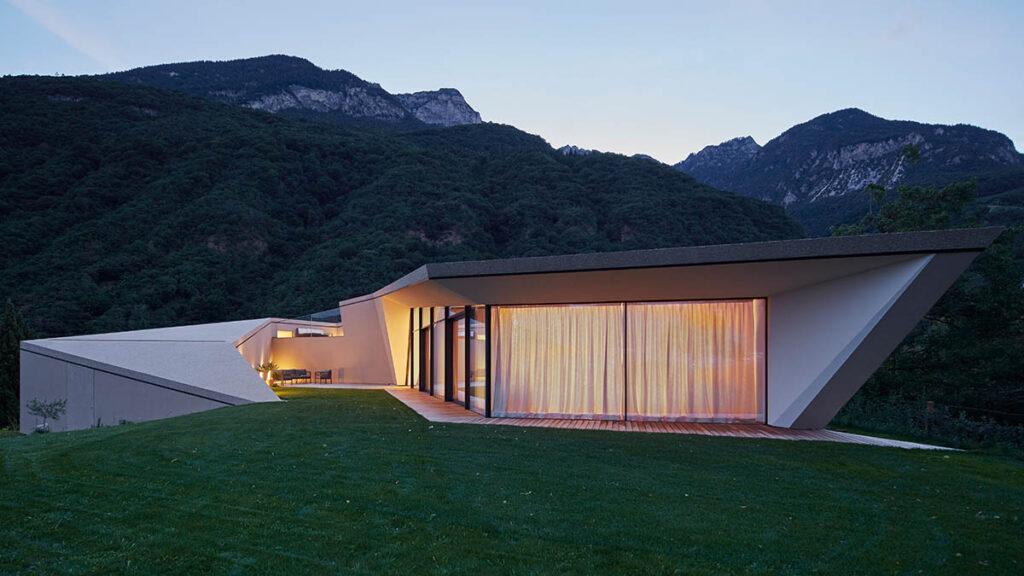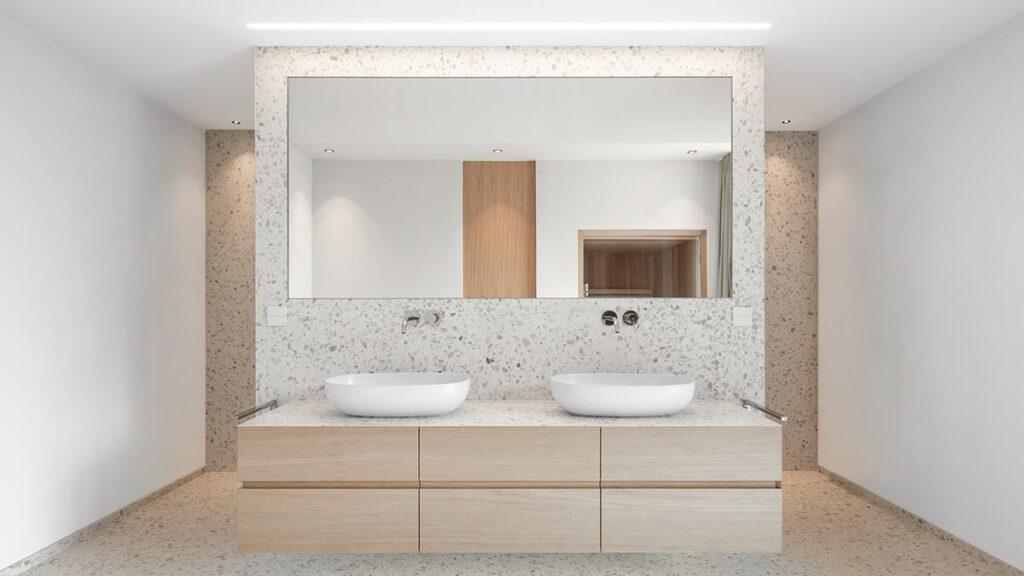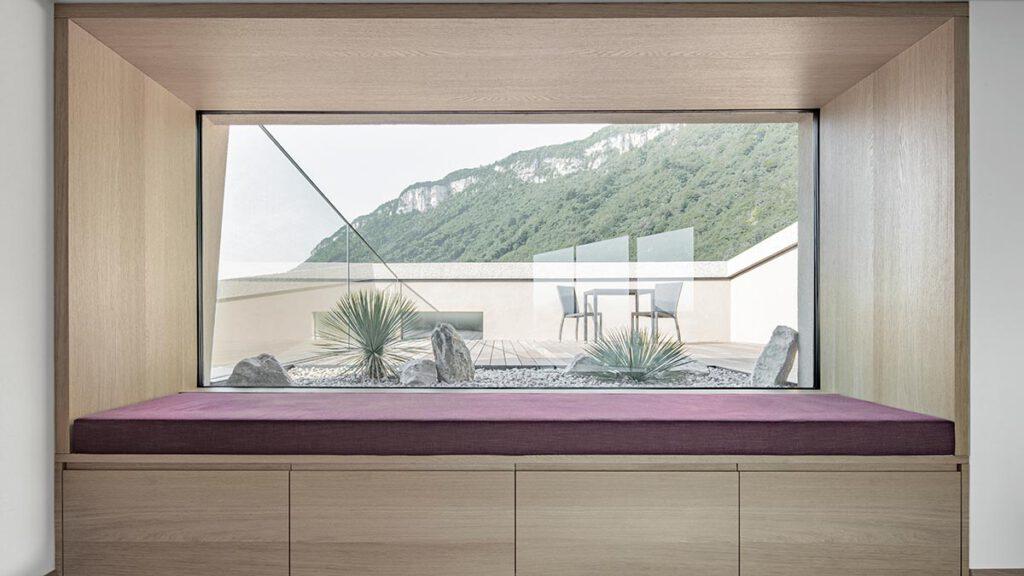Moved by the spirit of wine
Inspired by the vineyards of northern Italy, architect Peter Pichler planted the modern villa Kastelaz Hof amidst the vines, masterfully using his home advantage.
It is the specific circumstances of a place that fascinate Peter Pichler, whether he is building a luxury villa for a rich sheik and his family in Abu Dhabi, exclusive tree houses in Kitzbühel or a picture-perfect wine-growing estate in South Tyrol. A former student of Zaha Hadid, he explains: “For us it is extremely important to understand the place where a property is built.”
Home match for Peter Pichler
“Of course,” he admits, “it’s easier for me to understand the world in Austria or Italy, because I come from South Tyrol myself.” Pichler is sure that you can only integrate a property into the world in which it’s built once you have gained your own impression of this world. Otherwise, it’s guaranteed to be perceived as a foreign object, adds the 38-year-old architect.
There’s definitely no risk of that in the project he recently completed, the Kastelaz Hof. After all, Pichler was operating entirely within his familiar homeland in the midst of the South Tyrolean Alpine landscape. Here, he had the chance to turn an old wine-growing estate into a new one.
Special order: the Kastelaz Hof
It was a challenge entirely to Pichler’s taste. And this is probably why he won the bid for the job. The winner really had to know the area like the back of their hand to find the ideal architectural solution. After all, the task meant reconciling the client’s special requirements with the geographical conditions.
Wind from Lake Garda
The location in the Termeno region is nestled among mountain valleys, vineyards, a forest and the nearby Lake Kaltern. These magnificent surroundings had to be given special consideration as the setting for the new home, especially as the location allows 360-degree views of the landscape. The nearby Lake Garda alone caused Pichler and his team some headaches. They needed to make sure that the strong winds coming from its shores interfered as little as possible with the laid-back life in the new wine-growing estate.
The clients, together with the creative planners, therefore decided to demolish the old farmstead entirely to give them a new ground plot to build on. This now takes the shape of a horseshoe, which means the living areas and the inner courtyard are excellently protected, even from storms coming from the Lake Garda region. An all-round view is nevertheless ensured.
The glass façade: a visual trump card
To provide extra protection from bad weather, only a few window openings were integrated into the north façade, which is exposed to the weather. In contrast, Peter Pichler glazed almost the entire south façade. This ensures that from the entrance the gaze is directed along the entire length of the living area to the view behind it.
The official description states: “The wide glass façades are designed to frame and accentuate the surroundings. This allows the landscape to flow into the interior spaces, while maintaining privacy inside.”
Thanks to the horseshoe shape, the building can be divided into three logical wings, each of which is used differently. The main wing was elevated to allow greater room heights in the living room and kitchen. This results in a kind of mezzanine floor offering direct access to a terrace with spectacular views of the vineyards and into the distance.
Each wing has a task of its own
The bedrooms as well as a guest suite and two children’s rooms are located in the other two south-facing wings. The entire 380-square-metre building nestles gently into the hills, making it virtually invisible from the nearby village.
In choosing the materials, Peter Pichler was able to play to one of his other strengths: his passion for local materials. The white concrete architecture of the house is reminiscent of the limestone that has always been used for retaining walls in the local vineyards.
Minimalist inside and out
The resulting minimalist look is carried into the equally simplistic interiors. Here, however, the star architect integrated sophisticated wood and terrazzo details that capture the craftsmanship of the region. “Local materials such as concrete and wood were used for both the interior and exterior to create a unified architecture and a warm but simple and minimalist atmosphere for the family,” the official statement says.
Pichler also resolved another problem artfully: to integrate the wine-growing estate’s naturally complex logistics in an elegant way, a 340-square-metre garage was first set deep in the hillside. This allows all technical equipment, a laundry room and cars to be neatly hidden away under the beautiful Kastelaz Hof.
From cellar to wine
From this underground world, a large staircase then leads up to the wide-opening entrance hall. If you weren’t already in the mood, this room is sure to awaken a taste for what this spectacular region is known for: a sip of the delicious Gewürztraminer.
Text: Johannes Stühlinger
Images: Peter Pichler Architecture
